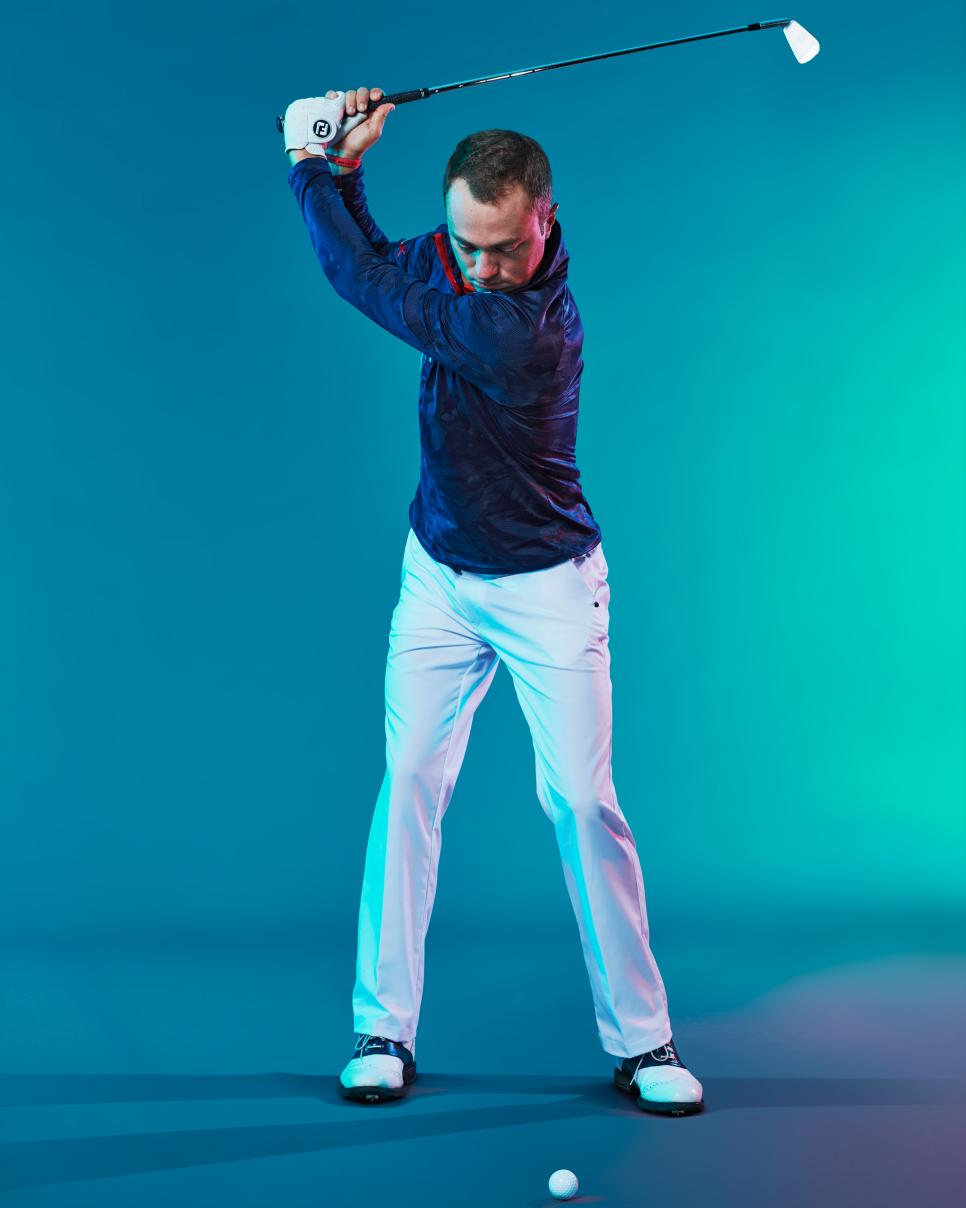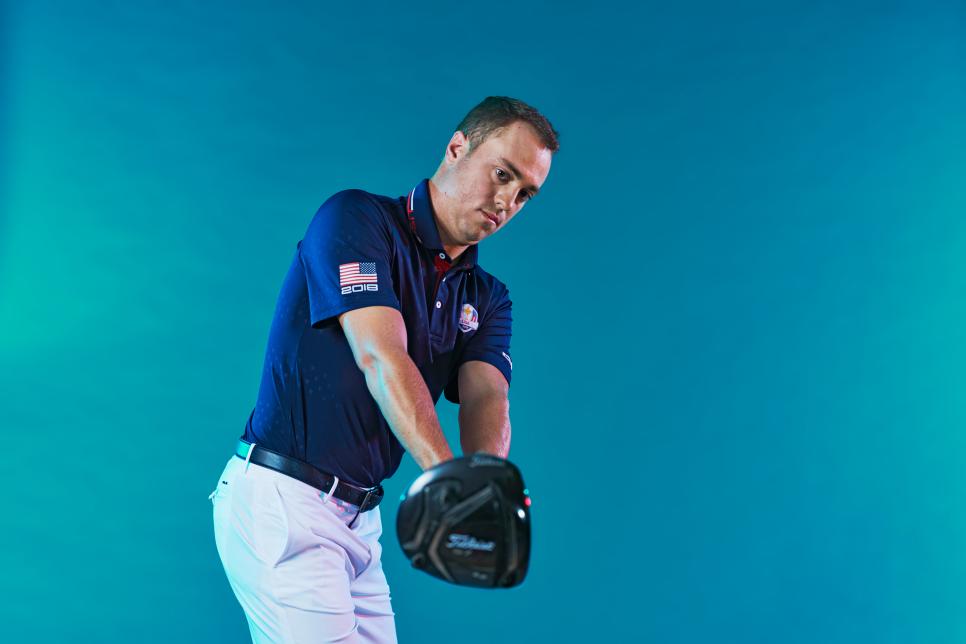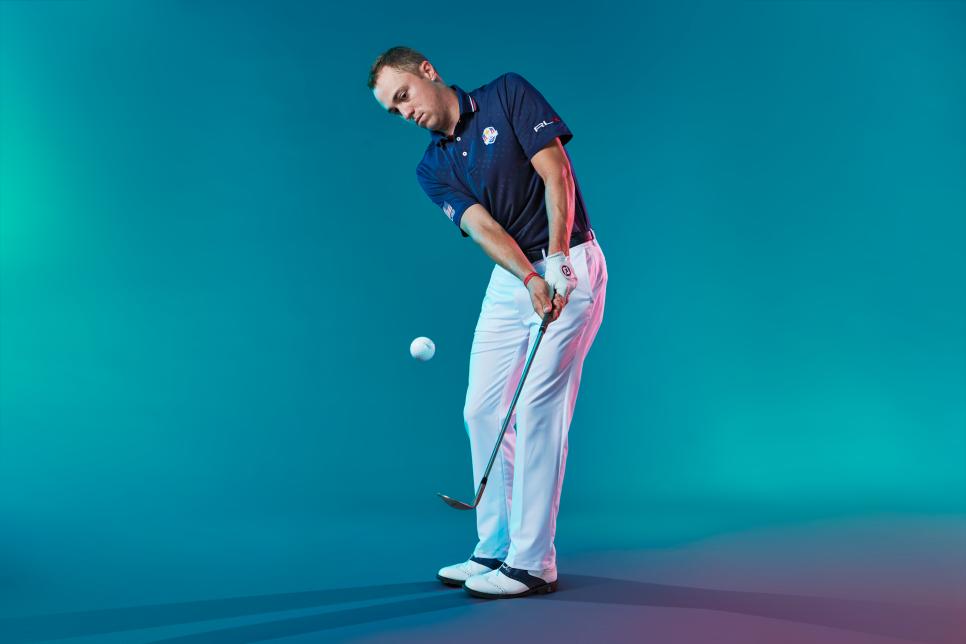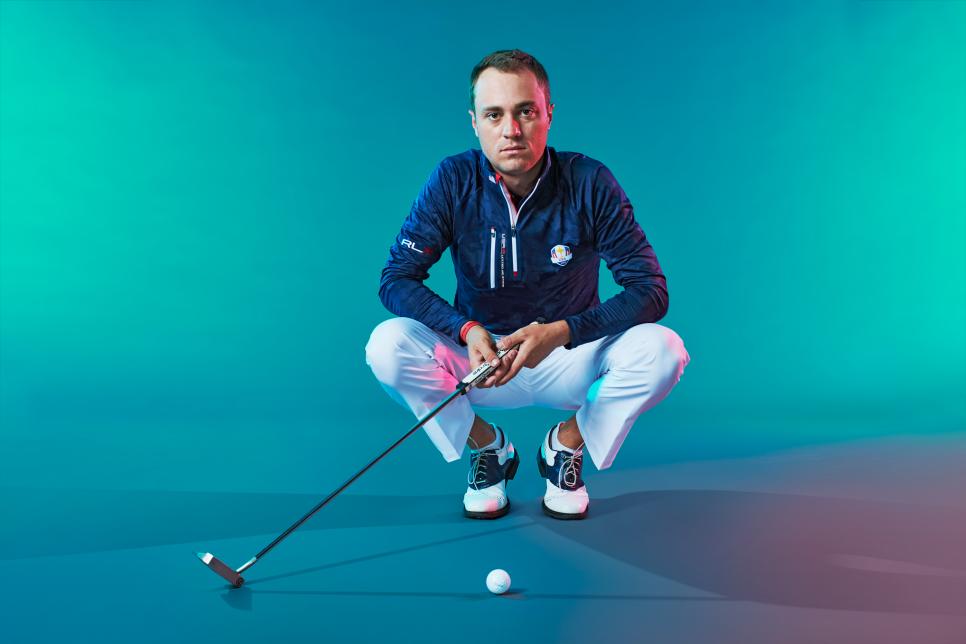There's a part of the game that you might not give much thought to, but if you did, I really believe you'd start shooting lower scores. Best thing, you won't have to wait years or months to see improvement. Any idea what I'm hinting at? Did the headline give it away? Yup, I'm talking about how to practice. The way I do it helped me get to No. 1 in the World Golf Ranking earlier this year, and it can help you, too.
My father, Mike, is a golf professional, and he likes to remind students that the longest walk in this game often is from the range to the first tee. Why? What many golfers do when they practice really doesn't prepare them for what they're going to experience on the course. If your typical range session is hitting ball after ball while cycling through the clubs in your bag—and your scores aren't getting any better—it's time to try something different, don't you think? Here, I'm going to walk you through the ways I practice and warm up. If you're interested in playing better, feel free to steal my plan and make it your own. — With Ron Kaspriske

Photo by Finlay Mackay
HOW TO PRACTICE
A big reason for my recent successes comes from the way my dad and my short-game coach, Matt Killen, analyze my performance so we can optimize my practice time. They pore over my stats and identify the ones that matter most. For example, recently my dad noticed I was having trouble with approach shots from 50 to 75 yards and scrambling in the 20-to-30-yard zone. So we spent extra time on those types of shots. Makes sense, right?
We pay attention to my stronger stats, too. You can't ignore your strengths, or they'll eventually let you down. The point is, you have to be honest with yourself about your game. Whether you track stats or not, knowing that you tend to pull your wedge shots and get up and down only occasionally should tell you that in the limited window you have to practice, whaling on a driver is probably not the best use of your time. Hit a few to reinforce your method (and have a little fun), but don't focus on the driver.
OK, so let's assume you've assessed your game and have been working to improve your weaknesses and maintain your strengths. Let me ask you a question: Are you randomizing your practice? By that I mean, are you hitting the same shot over and over or switching it up? I'm a big believer in the latter. One way I do that is with my TrackMan launch monitor. I set it up to spit out random yardages, from 126 to 150 yards as an example, and I have to hit whatever shot it requests. I realize most of you don't have access to a $20,000 monitor, but you can give yourself a new target or a new challenge—or both—for every ball you hit. For example, hit one at the 150-yard marker with two different irons or two different shot shapes. What you're doing is simulating the golf-course experience. Rarely do you have the same shot two swings in a row, so your task changes from shot to shot. You should practice that way, too.
This method also will really help your short game. And practicing around the greens is where you should spend the bulk of your time. Unless you're working on a particular thing in your technique and don't want to move until you feel like you've got it, I wouldn't stand in one spot around the green and hit the same shot over and over. Keep changing your goal. One way I do that is to use three balls and pitch or chip them at three trajectories to the same target. Then I move to another target and do the same.
When it comes to putting, I'm probably more drill oriented in my practice than in any other aspect of the game. For example, I start every session checking my eye line with an alignment mirror. I want to make sure my left eye is just behind the ball, and more important, my eyes are lined up with the putting line. It's so easy to get your alignment out of whack, and when that's off, even a perfect read and stroke can lead to a miss. So checking your alignment frequently is a must for good putting.
Another drill I do focuses on rolling the ball on line. I'll find a breaking putt and anchor two ends of a string about six inches above the ground on the start line. Then I'll put two tees in the ground to the sides of that line about six inches in front of me. The goal is to roll the ball between the tees along that start line. Getting back to what I said about practicing the things you don't do very well, I wasn't very good at medium-range putts for a long stretch. So I spent a lot of time hitting putts between 10 and 25 feet. Think about the types of putts you struggle with the most, and focus your practice on them. The message: You've got to get out of your comfort zone when you practice if you want to become a better player. That's what we do on tour.

Photo by Finlay Mackay
HOW TO WARM UP
On the days I'm playing golf, my practice time differs from a regular session. On the range I spend more time with my wedges. I'd say 30 to 40 percent of my warm-up is hitting different short shots. I'll put the TrackMan next to me to verify my distances and spin, trying to hit half shots, full shots, high shots, low shots, a little bit of everything.
Once I get into the longer irons, I'm really paying attention to shot shape. Sure, I'll vary it from draws to fades, but when I'm hitting it my best, the ball flies pretty straight with a little fade at the end. So I want to make sure I can hit that shot before heading to the course. What happens if I can't? Well, if I don't have it, I just have to play with what I've got. My advice is to really pay attention to your shot shape for that day. Forget that you were drawing every shot last week. If it's not happening on the range, it's not happening on the course.
I understand you'll want to hit some full shots to get loose, but again, the short-game area is going to help you score far better than the driving range. Throw balls down around the practice green and hit chips and pitches to various targets to acclimate yourself to the various lies you'll be facing on the course. While you're at it, hit some bunker shots, getting a feel for the firmness and how your ball will react once it lands on the green.
If you had time to do only one thing before you play, get a feel for how big a putting stroke you need to get the ball to the hole from various distances. A lot of times, I feel like I'm reading greens great but not hitting putts at the right speed. If you leave the practice green consistently rolling the ball a foot or so past the hole, you'll be ready for battle.

Photo by Finlay Mackay
Now that Justin Thomas told you how to get more out of your practice time, here's your chance to join him for a 20-minute range session where he shares his thoughts and demonstrates the plan he used to become one of the game's top players. To see it, go to golfdigest.com/allaccess.


